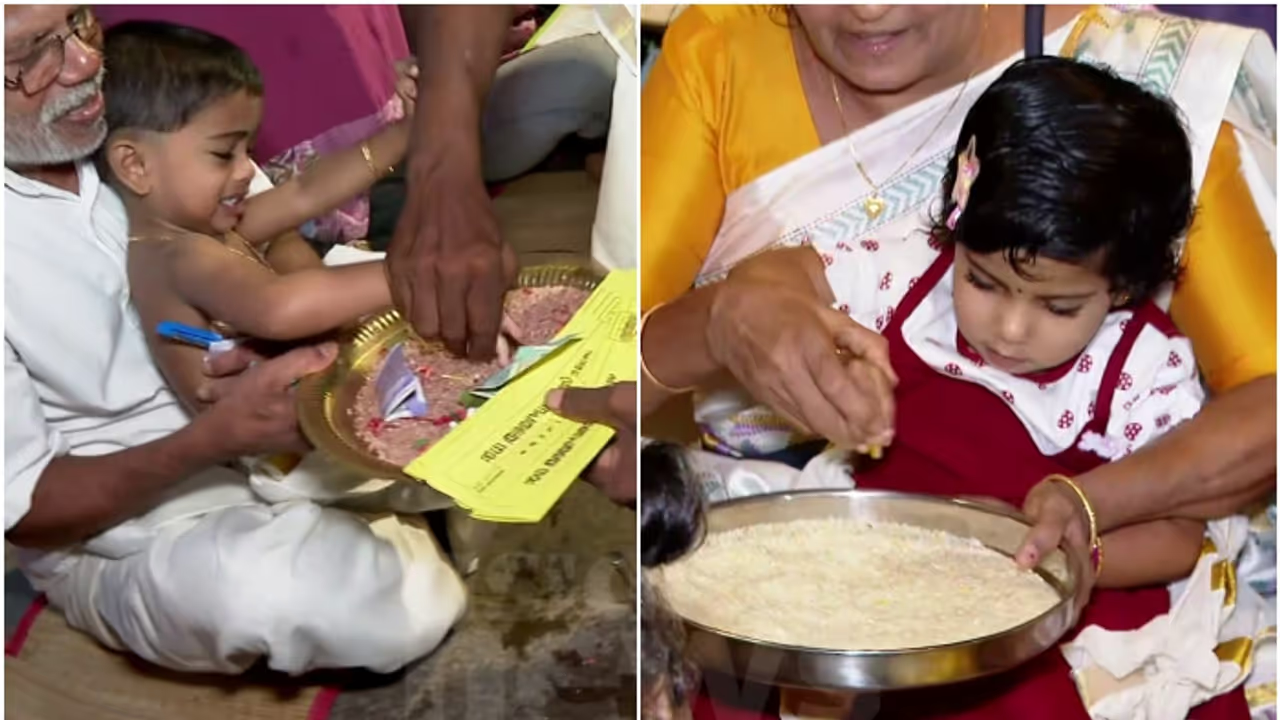On Vijayadashami, the auspicious Vidyarambham ceremony takes place in Kerala, marking the initiation of children into the world of education. Families place books for Puja, and after worshipping Saraswati, the goddess of learning, children write their first letters on rice or sand
Vijayadashami, also known as Dussehra, is a significant Indian festival celebrated annually after Navaratri. The name "Vijayadashami" comes from two words: "Vijaya," meaning victory, and "Dashami," meaning tenth, symbolizing the triumph of good over evil on the tenth day. The festival's origins are tied to the Ramayana, marking the day Lord Rama defeats the demon king Ravana after the abduction of Sita.

On Vijayadashami, children take their first step into the world of learning by writing their initial letters in Vidyarambham ceremonies at temples and cultural centers. Cultural organizations are also participating, while well-known figures in literature and society are helping to initiate children into writing.
Prominent figures from the literary and social sectors will guide children in the ritual of "Ezhuthiniruthal" (writing initiation) across the state. Temples like Panachikkadu and cultural centers such as Thunchan Parambu in Malappuram are also conducting these ceremonies.
"Vidyarambham" is a tradition celebrated on Vijayadashami, the tenth and final day of the Navaratri festival. This day holds special importance for introducing young children to education and learning. The term "Vidyarambham" comes from Sanskrit, where "Vidya" means knowledge or education, and "arambham" signifies to begin or initiate.
Today, thousands of children across Kerala are participating in this ritual. Early in the morning, there was a significant turnout at the Saraswati temples for the ceremonies.
How do people celebrate Vijayadashmi in Kerala?
On Ashtami Day in Kerala, books are set aside for Puja in homes, traditional nursery centers, or temples. Following the worship of Saraswati on Vijayadashami, these books are ceremoniously brought out for reading and writing. This day, known as Vidyarambham, is considered auspicious for introducing children to the world of reading and writing.
During the brief ceremony known as Vidyarambham, an elderly person writes the invocation "Harisree Ganapataye Namaha, Avighnamasthu" to Lord Ganapati on the child's tongue using a golden ring. The child then uses their right index finger to write the same words on a bed of rice or sand. Meanwhile, the father or instructor guides the child's hand, tracing the letters of the mantra. Afterward, the alphabets of the child's native language are inscribed on the grains. Once this ceremony is completed, the child is formally admitted to school for their education.
Attukal Bhagavathy Temple in Thiruvananthapuram, Guruvayur Sree Krishna Temple in Thrissur, Chottanikkara Devi Temple in Ernakulam, and Panachikkadu Saraswati Temple in Kottayam are a few of the important locations for the same.
On this day, it is customary to honor teachers (gurus) and Saraswati, the goddess of learning, by offering gurudakshina. This typically consists of a betel leaf, an areca nut, a small amount of cash, and new clothing items, such as a dhoti or saree.
